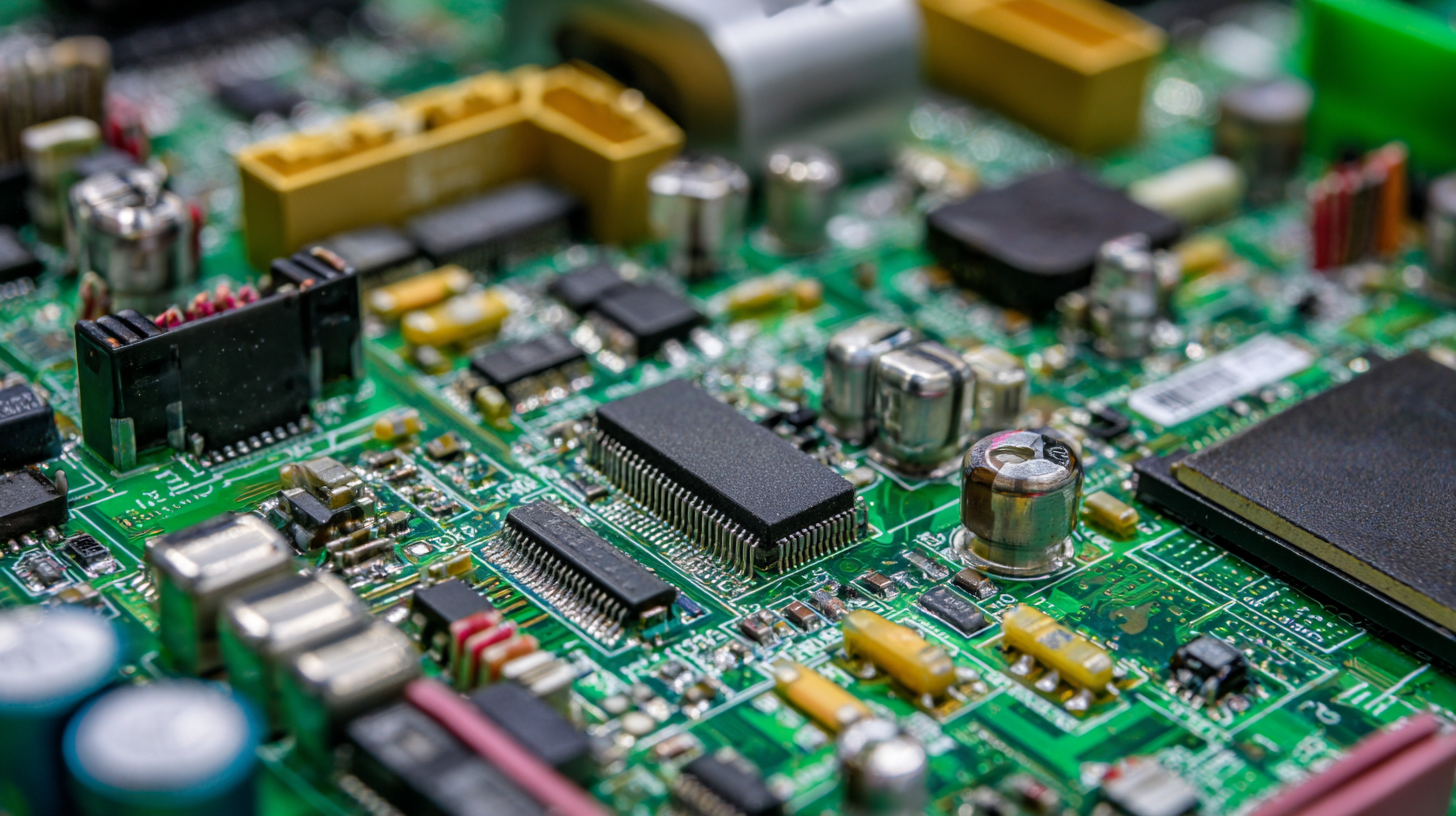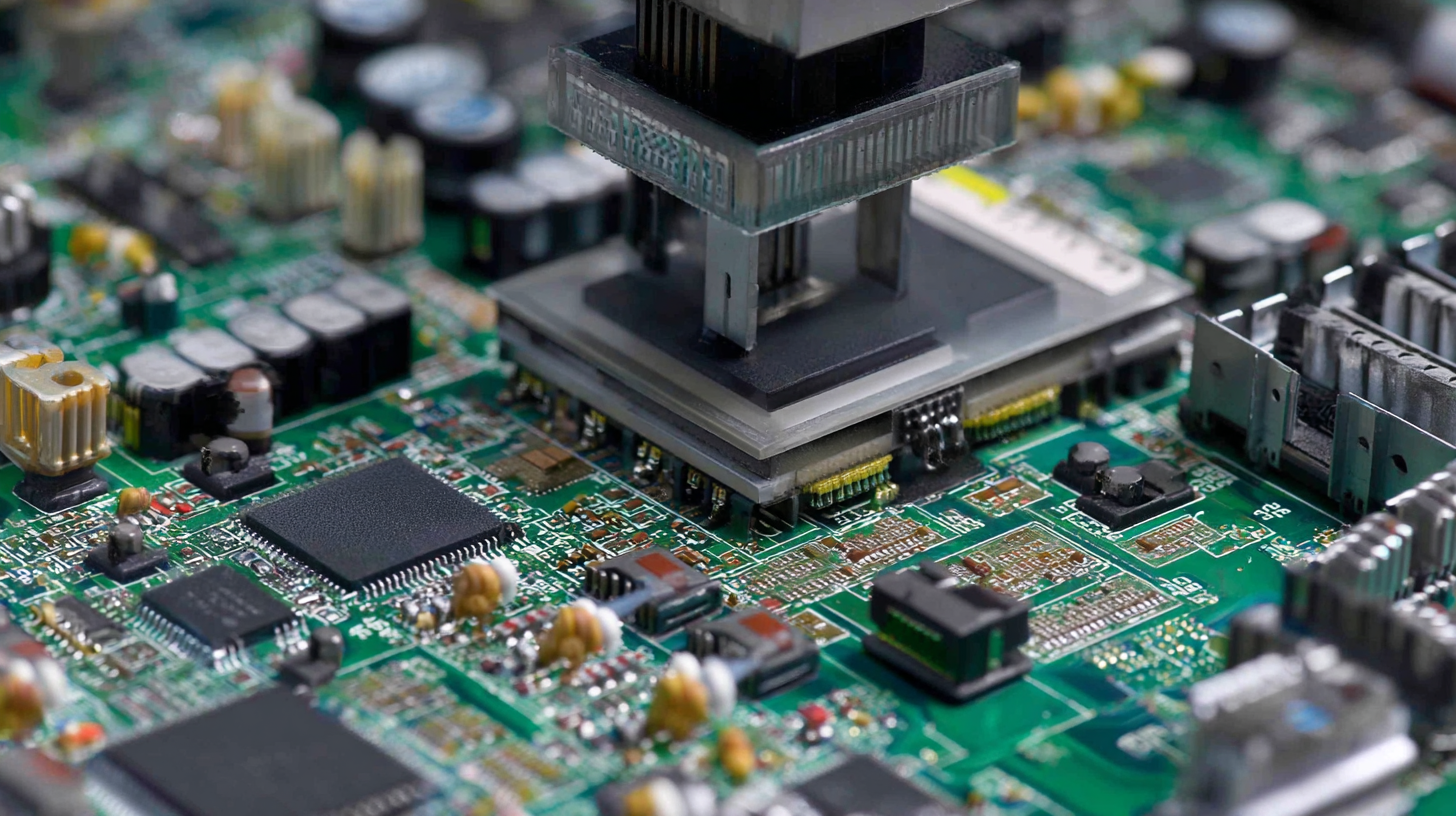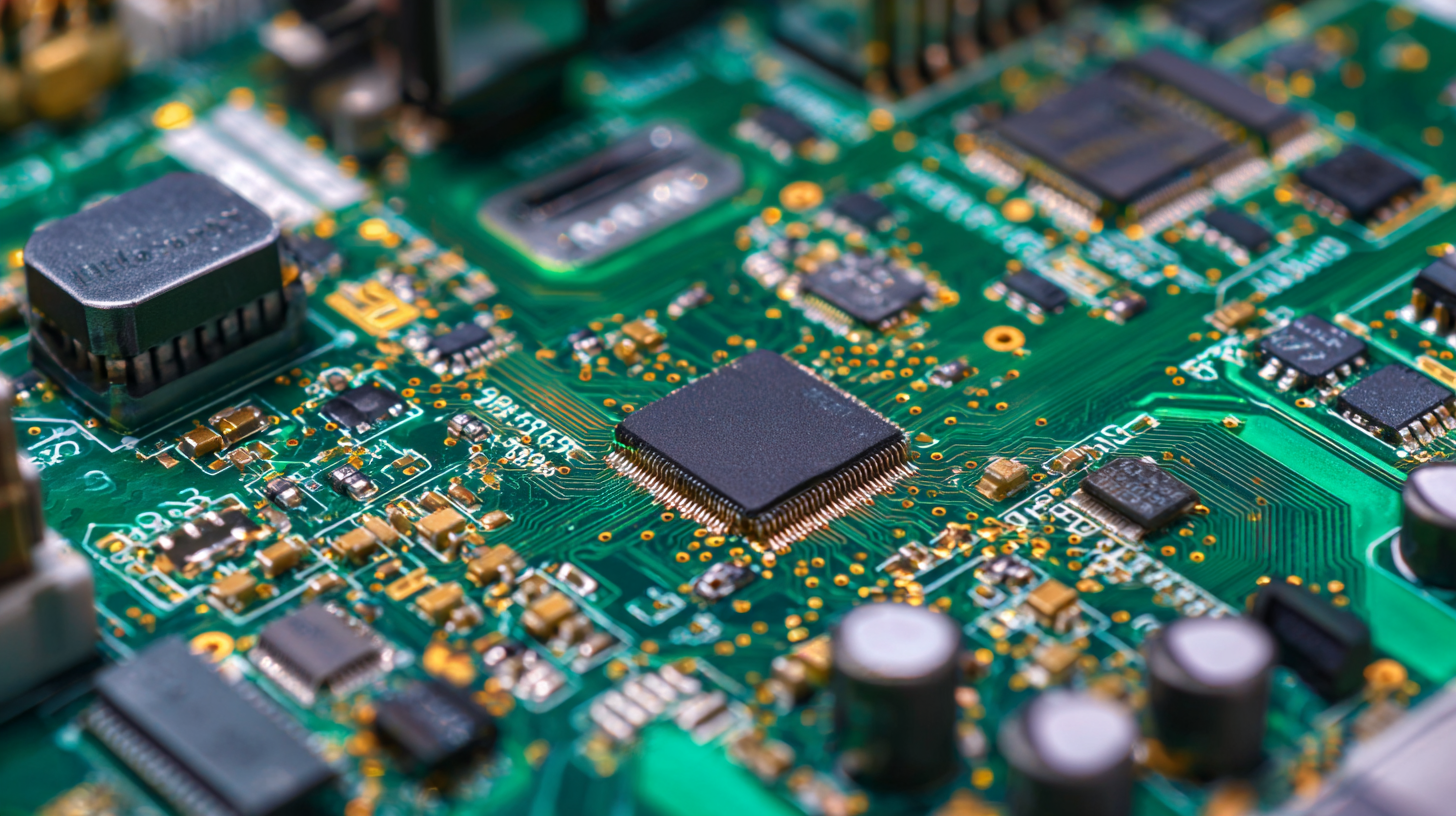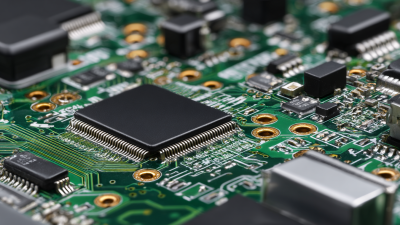Ultimate Guide to Mastering Pc Board Assembly Techniques
Table of Contents
- The Evolution of PC Board Assembly Techniques in Modern Electronics
- Key Metrics: Assembly Time and Cost Savings from Automation in PCB Production
- Innovations in Soldering Techniques: From Wave to Selective Soldering
- Understanding the Impact of PCB Design on Assembly Efficiency
- The Role of Component Placement in Reducing Manufacturing Defects
- Future Trends: 3D Printing and Its Potential in PCB Assembly Processes
- FAQS
- Conclusion
- Related Posts
Hey there! In today’s fast-moving world of electronics, getting a good handle on PC Board Assembly techniques is pretty much essential if you want your production to be top-notch and efficient. This ultimate guide is really designed to help both folks just starting out and seasoned pros level up their game. We cover all the key methods like Surface-Mount Technology (SMT), Pin Through the Hole (PTH), and Chip-on-Board (COB) assembly — everything you need to know. Here at Zhuhai Xinrunda Electronics Co., Ltd., we’ve been around since 2004 and take pride in being a high-tech electronics company that’s all about delivering comprehensive manufacturing services. Our expertise in different assembly techniques doesn’t just make products more reliable; it also helps us meet the unique needs of all our clients. So, join us as we take a deep dive into the world of PC Board Assembly — where precision, innovation, and quality really matter and come together.

The Evolution of PC Board Assembly Techniques in Modern Electronics
You know, when you look at how PC board assembly techniques have evolved, it's really become a kind of mirror for how modern electronics are advancing. Over the last ten years or so, there's been a big shift toward automation and precision—mainly because people want smaller, more efficient gadgets. I read somewhere (a market report from Grand View Research, actually) that the worldwide PCB assembly market is expected to hit around $61 billion by 2025. That’s roughly a 4.4% yearly growth. It makes sense when you think about how much demand there is for consumer electronics, IoT stuff, and even automotive electronics—all of which need smarter, more sophisticated assembly methods.
At the same time, the move towards surface mount technology, or SMT, has totally changed the game. It allows for more components packed in tighter, making boards smaller but more powerful—perfect for today’s tech. Research and Markets even says SMT is set to grow about 5% each year, thanks to its ability to handle tiny, complex parts with ease. Plus, new tech like automated optical inspection (AOI) and even machine learning are really stepping things up, helping catch errors and boost quality. As these techniques keep getting better, they’re opening doors to even cooler innovations across all sorts of industries—and honestly, it’s pretty exciting to see how fast everything’s moving forward.
Evolution of PC Board Assembly Techniques Over Time
Key Metrics: Assembly Time and Cost Savings from Automation in PCB Production
In today’s super competitive world of electronics manufacturing, it really pays off to understand the key numbers behind assembly time and how automation can slash costs in PCB production. I’ve seen reports showing that automation can cut assembly time by up to half—yeah, 50%! That’s a game-changer, especially when deadlines are tight but you still want your quality to stay top-notch. By using smart robotics for tasks like placing components and soldering, manufacturers can crank up their output and work more efficiently without breaking a sweat.
Here’s a tip: Take a good look at your current assembly process and spot where things tend to slow down or get bottlenecked. Introducing automation into those areas can really boost your operations, plus cut down on labor expenses—that’s usually around 30-40% of the whole manufacturing bill. It’s a win-win.
And get this—market data shows that investing in automated PCB assembly setups can save companies over 20% in production costs over time. This makes a lot of sense, especially since everyone’s demanding faster turnaround times these days. Of course, the initial investment isn’t free, but the long-term savings and bigger profit margins make it worth considering.
My advice? Go for a phased approach. Start small—integrate new tech step-by-step into what you already have. This way, you won’t disrupt everything all at once, and your team can adapt and learn as you go. It’s all about making the transition smooth and manageable while reaping those long-term benefits.
Innovations in Soldering Techniques: From Wave to Selective Soldering
You know, when it comes to building PC boards, there's been quite a shift in soldering methods lately. Remember the old-fashioned wave soldering? Yeah, it’s still around, and it’s pretty quick for batch soldering of through-hole parts, but it’s not perfect. Sometimes, it’s tricky to control the heat, and that can cause damage to sensitive components or lead to defects—especially on boards packed tight with components.
That’s where selective soldering comes into play, and honestly, it’s a game-changer. Instead of flooding the whole board with solder, this technique lets you target exactly where you need it. That means less heat stress on nearby parts, less solder wasted, and a more efficient production line. Plus, it’s perfect for boards with a mix of through-hole and surface-mount parts, making the whole assembly process way smoother and improving the final product’s quality. As the industry keeps evolving, getting a handle on these new soldering techniques is pretty much a must if you want top-notch performance in PC board manufacturing.

Understanding the Impact of PCB Design on Assembly Efficiency
Figuring out how PCB design affects how smoothly things come together in assembly is pretty important if you want to make the whole production process run better. A smart, well-planned PCB layout can really cut down on assembly time, help catch errors early, and boost the overall quality of the final product. Things like where you put components, how you route the traces, and how you stack the layers all make a big difference in making assembly easier and more efficient. For example, placing components thoughtfully can give you better access for soldering, and good trace routing helps avoid confusion, cuts down on shorts, and makes the manufacturing process a lot more straightforward.
Plus, the materials you choose and how you lay out the pads have a real impact on how easy it is to solder and how well the reflow process works. Designing with enough pad space for different components just makes the solder joints more reliable—less rework in the end. And if you start thinking about manufacturing constraints early on—what we call DFM principles—it can really streamline the assembly. When designers take potential issues into account right from the start, they end up creating boards that are not just functional but also a lot easier and quicker to put together. Over time, that can save a bunch of money and boost productivity.
Ultimate Guide to Mastering PC Board Assembly Techniques - Understanding the Impact of PCB Design on Assembly Efficiency
| Design Factor | Impact on Assembly Efficiency | Recommended Best Practices |
|---|---|---|
| Layer Count | Higher layer counts can complicate assembly and increase costs. | Limit to necessary layers without compromising design functionality. |
| Pad Size | Inadequate pad size may lead to poor solder connection. | Follow industry standards for pad dimensions. |
| Component Placement | Poorly planned component placement increases the risk of assembly errors. | Use a logical layout that minimizes movement during assembly. |
| Trace Width | Narrow traces can lead to potential overheating and failure. | Calculate trace width based on current requirements and design rules. |
| Via Size and Type | Improper via selection can lead to electrical issues and assembly challenges. | Choose appropriate via types based on application requirements. |
The Role of Component Placement in Reducing Manufacturing Defects
Placing components on a PC board might seem pretty straightforward, but it’s actually super important—and can make or break the whole manufacturing process. When done right, good placement doesn’t just boost how well your final product performs; it also helps dodge a bunch of common issues during assembly. For example, if components are packed in too tightly, you run the risk of solder bridges or electrical hiccups. On the flip side, if you plan your layout carefully, you’re more likely to get solid, reliable connections and avoid mistakes caused by misalignment or cramped spacing.
**A few tips to nail component placement:**
1. Use automated pick-and-place machines if you can—these little gadgets are great for precision and keep things consistent. It saves a ton of time and reduces those pesky human errors.
2. When designing your PCBs, make sure you add clear guidelines for how components should sit—especially for polarized parts—so the assembly process goes smoothly, and you don’t end up with costly setbacks.
3. And don’t forget about heat! Keep heat-sensitive components away from parts that generate a lot of it. This little trick can prevent overheating and help your assembly last longer.
Getting thoughtful about where you put things can really boost the overall quality of your build and make manufacturing more efficient. By following these tips, you'll probably see higher yields and happier customers in the long run.
Future Trends: 3D Printing and Its Potential in PCB Assembly Processes
You know, with 3D printing tech really taking off, it’s about to totally change how we do PCB assembly. The efficiency and customization possibilities? They’re pretty much game-changers that we couldn’t really dream of before. I came across this report from MarketsandMarkets that said the market for 3D printed PCBs might hit around $2.4 billion by 2025, growing at a solid 24.3% each year. And honestly, part of that growth makes sense — this tech lets companies whip up complex designs and prototypes super fast, so they can respond quickly to what the market wants.
Plus, 3D printing isn’t just about speed; it opens up a whole bunch of new design options—like embedding parts right into the boards or printing with different materials, which can really simplify the whole assembly process. I read a bit from IDTechEx too, and they pointed out that being able to print conductive stuff alongside standard substrates can cut down on steps in manufacturing and cut waste too, which is better for the environment. As more companies jump on board with 3D printing, not only are they pushing their design game to the next level, but they’re also saving some serious cash and getting their products out faster, which means they’re really staying ahead of the curve in PCB innovation.

FAQS
: The evolution is primarily driven by advancements in automation and precision to meet the rising demand for more compact and efficient electronic devices.
The global PCB assembly market is expected to reach approximately $61 billion by 2025, with a compound annual growth rate (CAGR) of around 4.4%.
SMT has transformed assembly methods by offering higher component density and reducing circuit board sizes, making it suitable for contemporary electronic devices.
SMT technology is projected to grow at a rate of around 5% annually.
Automated optical inspection (AOI) and machine learning integrations are being used to enhance quality control processes in PCB assembly.
Wave soldering is efficient for bulk soldering but can damage sensitive components, while selective soldering allows for targeted application of solder, minimizing thermal stress and improving efficiency.
Selective soldering minimizes thermal stress on components, reduces solder usage, and enhances production efficiency, especially on mixed technology boards.
Innovations in soldering techniques improve the assembly process and product quality, making it essential for manufacturers to adapt to new methods for optimal performance.
Selective soldering is ideal for mixed technology boards that incorporate both through-hole and surface-mount components.
Wave soldering can lead to potential damage on sensitive components and assembly defects due to uncontrolled heat exposure.
Conclusion
Hey, have you checked out the 'Ultimate Guide to Mastering PC Board Assembly Techniques'? It really dives into how PC board assembly has come a long way over the years, showcasing some pretty amazing advances that are totally transforming modern electronics. Like, these days, automation has really sped things up and cut down costs, and there are cool new soldering methods like selective soldering that boost both efficiency and quality. The guide also points out how the design of the PCB itself, along with the precise placement of components, plays a huge role in reducing manufacturing defects, which means more reliable electronic devices for everyone.
And get this—looking ahead, technologies like 3D printing are actually set to shake up PCB assembly even more. They’re opening doors for more flexible, faster, and more efficient manufacturing options. Over here at Zhuhai Xinrunda Electronics Co., Ltd., we’re super proud to stay ahead of these trends. We offer a full range of electronics manufacturing services—think SMT, PTH, COB, coating, you name it—to make sure we meet all of our clients’ needs. It’s an exciting time in this industry, for sure!
Related Posts
-

Mastering the Best Printed Circuit Board Assembly Process with Industry Production Standards
-

7 Top Reasons to Choose Pcb Assembly Services for Your Next Project
-

Challenges of Sourcing the Best PCB Design and Assembly for Your Business Needs
-

2025 Top Trends in Best Electronic Circuit Board Assembly for Global Buyers
-

Innovative Examples of Best Printed Circuit Board Assembly Techniques in Modern Manufacturing
-

How to Maximize After Sales Support and Reduce Repair Costs for Best Printed Circuit Board Assembly Pcba
Blog Tags:

